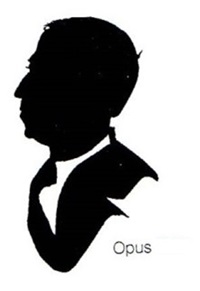2024 | Volume 25 | Issue 1
Author: Associate Professor Felix Behan, AM

My lightbulb moments in surgery
In the recent period of surgical development and the design and applications of the Keystone Flap, certain physiological elements have surfaced by way of observational findings. It respects the Louis Pasteur statement on observation: ‘chance favours the prepared mind on observational findings’ and it has remarkable clinical applications.
It was on the feast of the Epiphany that I attended a church service where the homily focussed on the importance of the spiritual revelation—enlightenment when the three wise men from the East brought their gifts to the newborn infant. The revelation was the Almighty showing himself to the world. In colloquial terms, some describe it as a lightbulb moment—no matter what ethnic background they belong to.
Revelation is a word used in the lay press when something is elucidated from an unknown source, as revealed in the Archimedes story and his ‘eureka’ expression after he had stepped into a bath and noticed that the water level rose equating to his body weight displacement.

Such was his eagerness to share his discovery he leapt out of his bathtub and ran through the streets of Syracuse (see images).
My ‘eureka’ moment was when dicing onions under a running tap—this prevented tears.
My lightbulb moments in clinical surgery in the development of the Keystone Flap are applied to the following cases:
Case 1: closure of a compound tibial fracture using a Keystone Island Flap and the suture points on the flap were bleeding more than on the inserted margin and with closure under tension. So, I presumed I had done a sympathectomy by creating the fascial based island flap.
More cases came my way and more observational findings surfaced including the resolution of peripheral oedema in the foot that had been present for 20 years from a chronic leg wound. The sequalae of the healing wound was pain free, in spite of closure under tension, aesthetic tissue match like for like is irreplaceable compared with free flap reconstructions.1The wound healed perfectly and was part of a publication of lower limb reconstruction with an orthopaedic bias.
The Keystone helps to overcome vascular complications and time restrictions of major operative procedures. It is strange it should happen in the postoperative phase that any postoperative distal oedema responded to elevation and compression stockings. Could it have been lymphatic channels recommunicated with the natural alignment of lymphatic drainage lines. Somatic sensation returned when the wound was healed.
Case 2: My second lightbulb moment relates to a chronic wound of the anterior tibial line, which was there for 14 years following a compound fracture. The patient had been subjected 21 procedures over this period to close this chronic wound—solved with a Keystone avoiding amputation.
The ulcer was covered with a Keystone along the L5 dermatome with its neurological, lymphatic, autonomic and somatic support intact. This too was published.1
In the postoperative consultation he said that his leg was the best it had felt for 14 years and grateful to return to work standing up all day at an industrial bench.
I concluded that with retained neurovascular support and the sensate and autonomic supply intact with somatic supply the associated lymphatic channels must have re-anastomosed. The academic verification of this is contained in the patient’s response.
I suspect it was the dermatome Keystone design retaining its somatic and endolymphatic supply, merely maintaining embryological factors—another speculative but another lightbulb moment—the patient’s story is always accurate.
Case 3: The final case is the closure of large Parotid defects of the face—the size of one’s palm. These can be closed using the loose neck tissue in the C2, C3 dermatomes, based on random perforators at the base of the sternomastoid perforators near the muscular attachment and the loose neck tissue is rotated to close these palmar sized defects pain free. The tension closure of the neck wound of the secondary defect requires the help of locking mattress sutures, which stay for three weeks. The Keystone characteristics are evident throughout these procedures and we have coined the acronym P.A.C.E.S—Pain free, Aesthetically matching, vascular Complications are rare, Economically responsible in terms of time and nursing staff monitoring, with Sensory recovery and resolution of oedema—which best describes the usual postoperative features. We followed the late Sir Harold Gillies’ edict of using ‘like for like’ in the repair of tissue.
Louis Pasteur, the father of immunity said, ‘Science knows no country, because knowledge belongs to humanity, and is the torch which illuminates the world.’ He also said, ‘chance observations favours the prepared mind’.
Louis Pasteur was a revolutionary who introduced the concept that infectious diseases could be prevented by vaccination (the French word for a cow is ‘vache’ and the Jenner milkmaid observation of their immunity to smallpox). Pasteur was the originator of future pasteurisation, which has stood the test of time.
The ‘lights’ are still on for every scientific mind and as Osler said, ‘observation is the basis of scientific advancement’.
References
1. Behan. FC. Keystone Perforator Island Flap in Lower Limb Reconstruction. AJOPS 2021;4(2):105–107 DOI: https://doi.org./10.34239/ajops.v4n2.341 Audio visual presentation.